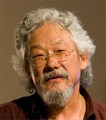Vision for ‘designing with nature’ in Adelaide, Australia: Create a city that is greener, more comfortable, healthier and more liveable

Stephens Forbes is positive about the availability of great design practices in South Australia. “There are some great landscape architectural practices and garden designers in Adelaide and accordingly some great projects but I’m not seeing this translate into substantial change. Investment in a few major iconic greenspace projects would help build leadership and capacity and prepare Adelaide for the future.”










